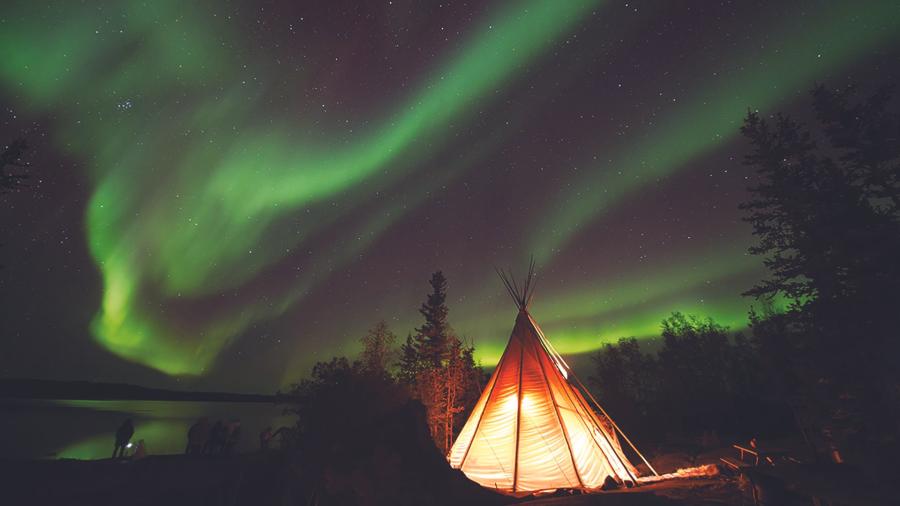During my visit to Sheshatshiu and the periphery of the bush-country in July, I stayed with members of the Penashue family. I spent my time listening to the stories of ongoing struggles in Sheshatshiu and the return to the old ways in the country. The bush is the place in which Moshum (Grandfather) beats his drum, tales of the dancing northern lights are recounted, and caribou are processed. During the fall and spring, when some parents remove their children from Peenamin McKenzie School and venture into Nitassinan's interior, the old ways are renewed and the warmth of community outside Sheshatshiu is felt.
The time I decided to visit Shehatshui was neither the late fall nor the early spring, when some Innu are on snowshoes and skidoos pursuing large game; but during summer, a time when black flies, mosquitoes, and horseflies reign and the heat of the July and August sun can only be escaped by salmon and trout fishing. While I did go into what I thought was the bush-country, to Elizabeth Penashue it was somewhere between the bush and settlement.
In this place, Elizabeth and I talked about the meaning of community. She explained that the four or five tiered rows of pre-fabricated houses in Sheshatshiu do not stand for community. Jutting out from the landscape, they represent a space where it is difficult for her to convey a traditional way of life and values. Elizabeth's conceptions of community are only operative in reference to the bush-country. That is, her sense of belonging -- her place -- is attached to the way of life in the wilderness.
When Elizabeth talks about the old ways, she refers to the Innu worldview. Learning how to set snares, net fish, and hunt porcupine is how knowledge is passed on. It is the action and not the instruction that conveys learning and reaffirms kinship. It is her relationship to the environment, the animals, and the weather that inform Elizabeth's relations with other Innu. Seasonal routines delineate specific rules which are obeyed. The landscape comprises many delineated points that inform interactions between past and present community members. In other words, place reifies memory. To Elizabeth, the landscape maps past, present, and future interactions between humans and their environment.
What Elizabeth envisions is a place rooted in the old ways and not circumscribed by telephone lines, dirt roads, and band council institutions. She sees herself as a guardian of these ways, and an instigator of social action and change in the settlement by spending time with members of Sheshatshiu in the bush-country. The construction of Innu tents, the preparation of banoc, and the consumption of porcupine all mark better times -- times of her childhood and of the future, the ensuing hunt. Times of community.
Article copyright Cultural Survival, Inc.



